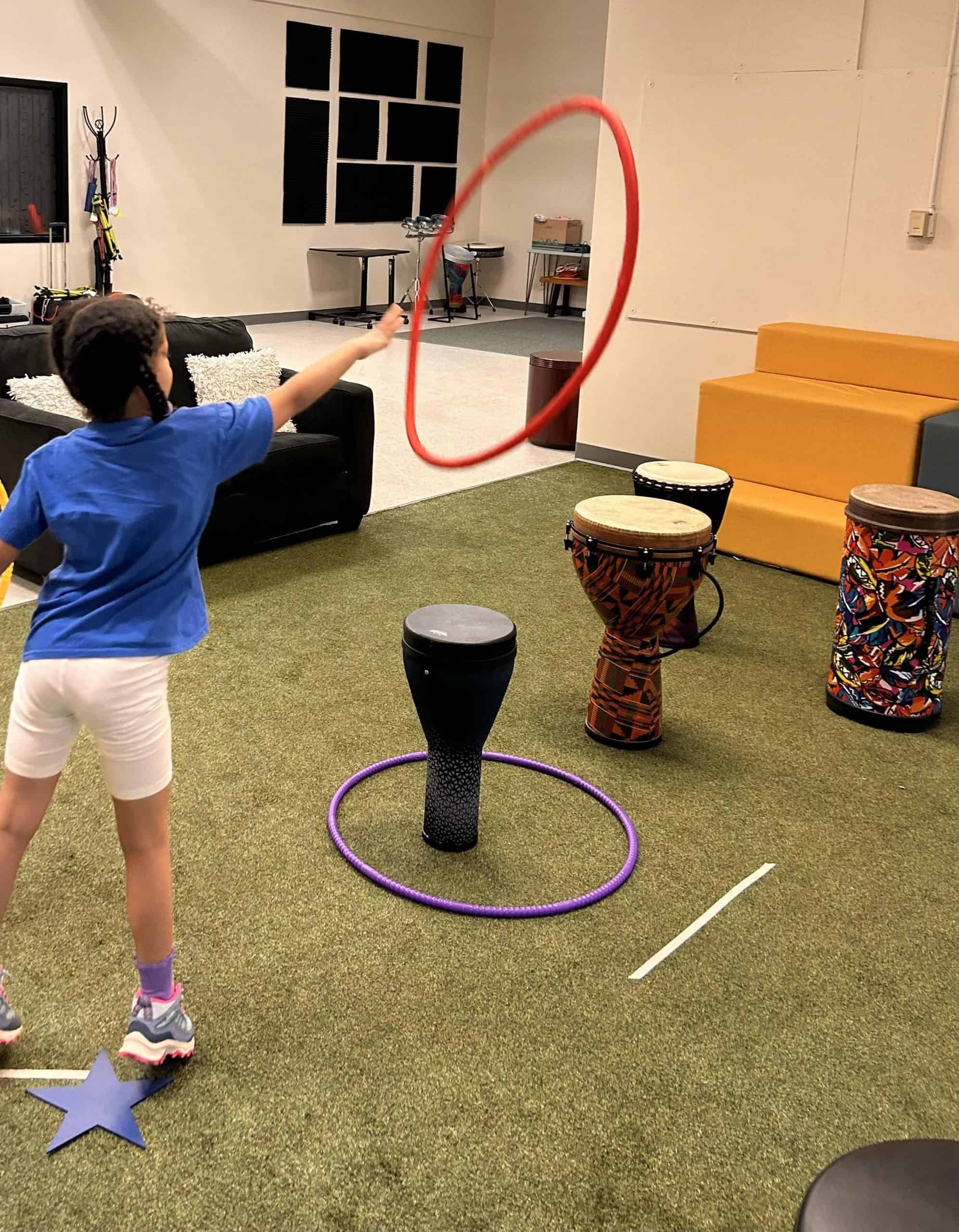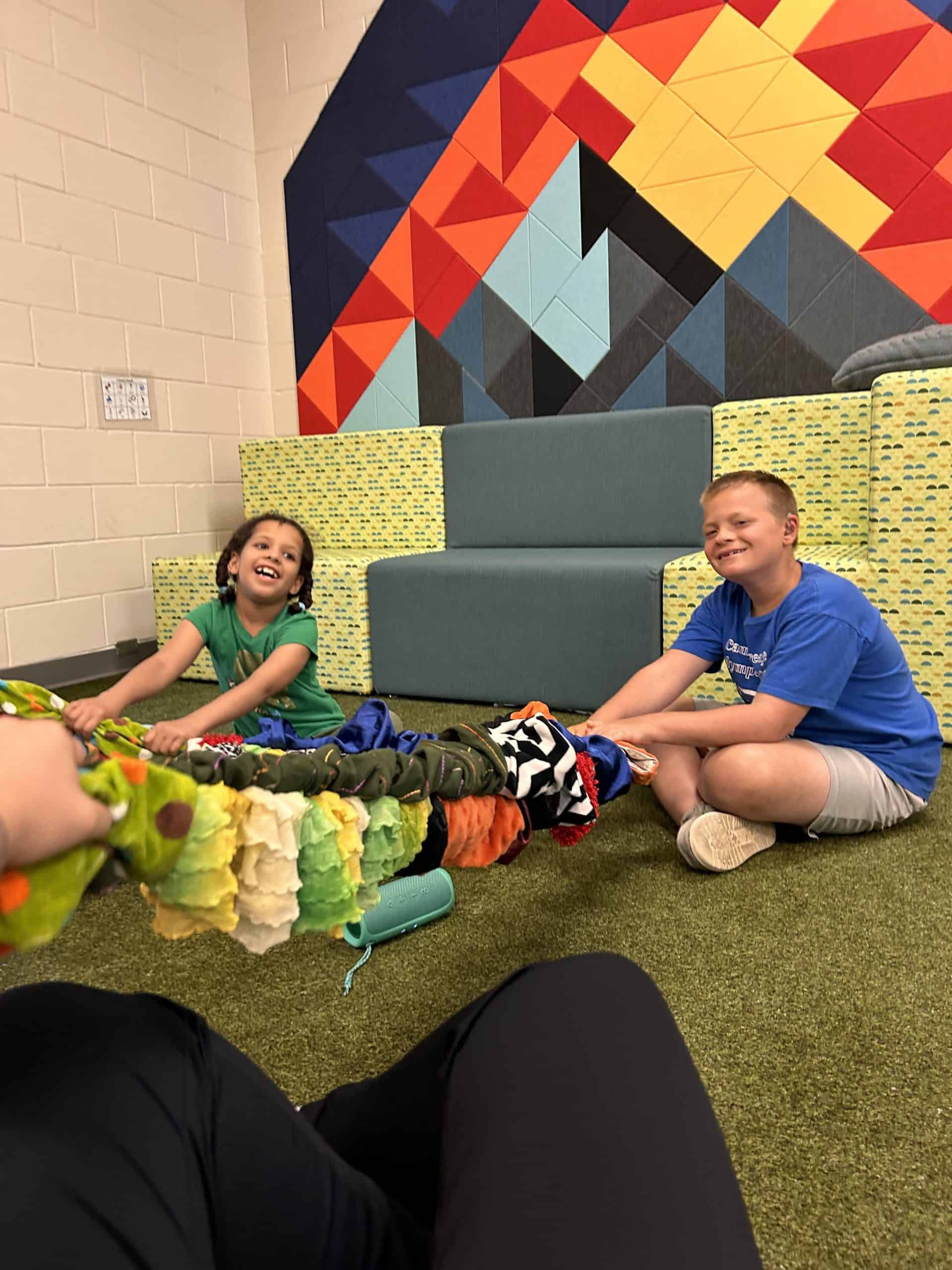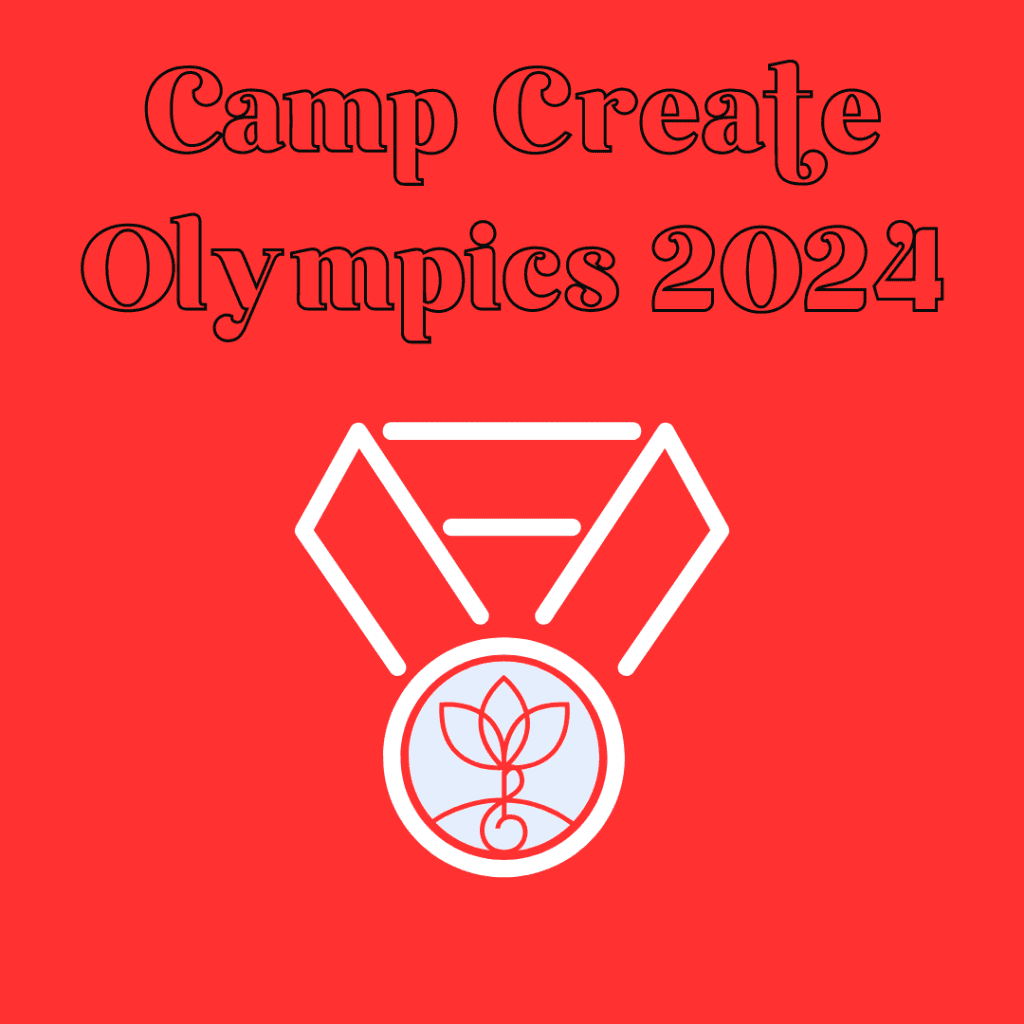I was never very good at team sports, but I loved the idea of working together as a group to achieve one goal. The support and encouragement strengthens as each team member cheers for their teammates, encourages them to score, and picks them up after a tough loss. Watching the 2024 Olympic games I was reminded of the importance and necessity of teamwork. As music therapists, we can provide our clients with these same opportunities through social groups and camp!
Music and Games?
For many people, music is naturally motivating. If I know I need to get to work on time, I’m going to play music that I can only listen to when I’m driving there. Similarly, if my client loves the rubber ducky song from Sesame Street, I can pair that song with a skill they are working on, such as impulse control, with something they like, for instance, bubbles”. Music based games may also be naturally motivating which can support learning, increasing motivation to engage in therapeutic activities and resulting in increased practice of skills (Lense, M. D., & Camarata, S. 2020).
Camp Create Olympic Games
At Healing Harmonies we arrange an 8-week creative therapies camp during the summer. This year we created our own “Camp Create Games” and tied it to different events showcased at the Olympics. We hand out medals each week that highlight characteristics such as focus, bravery, friendship, and creativity. Camp leaders provide opportunities for the campers to earn medals while engaging in music games and experiences.

Tubano ring toss is played individually, whereas balloon tennis is played as a team.
During the individual activities, campers participate on their own while their peers watch and cheer them on. When a camper doesn’t make the toss, they are supported by their team through words of affirmation and support.

Balloon tennis is a team activity where campers are directed to hit a balloon with a paddle drum, keep the balloon in the air, and pass it to their peers. This experience targets memory recall as they are required to say a person’s name before passing it to them. They also practice joint attention as they listen for their name and hit the balloon, sometimes simultaneously. This same action also targets 2-step direction following. Additionally, music games may also address other areas like social skills and attention.
In early August campers engaged in a mock rowing experience using a stretchy band. A stretchy band is a large row of resistance bands tied together and covered with textured fabric. This material creates group cohesion as each member is holding on and manipulating the movement simultaneously. The campers were directed to sit in a circle, listen to a variety of soundtracks at different tempos, hold the stretchy band and engage in a rowing motion all together in time with the chosen tempo. One person may actively row while another might just hold on to the band. Research shows that when people engage with a shared material and move synchronously, they are more likely to help each other, compared to those who don’t move together (Cirelli et al., 2014; Kirschner & Tomasello, 2009). Similarly, engaging in synchronous movement provides opportunities for motor imitation and attention control which can strengthen social connections and group cohesion.

Let us know if you try any of these ideas at home or in your sessions!
Cirelli LK, Einarson KM, & Trainor LJ (2014). Interpersonal synchrony increases prosocial behavior in infants. Developmental Science, 17(6), 1003–1011. 10.1111/desc.12193.
Lense, M. D., & Camarata, S. (2020). PRESS-Play: Musical Engagement as a Motivating Platform for Social Interaction and Social Play in Young Children with ASD. Music & science, 3, 10.1177/2059204320933080.
